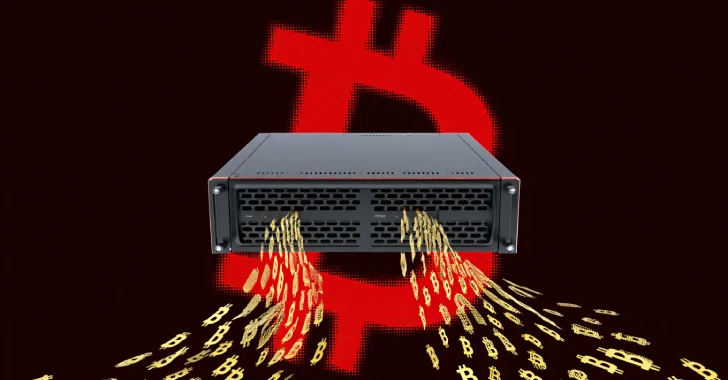
Hackers Exploit Apache HTTP Server Flaw to Deploy Linuxsys Cryptocurrency Miner
A disturbing new cyberattack campaign is actively leveraging a known security flaw in Apache HTTP Server to compromise vulnerable systems, subsequently deploying a sophisticated cryptocurrency miner dubbed “Linuxsys.” This ongoing threat highlights the critical need for vigilant patch management and robust server hygiene.
Understanding the Vulnerability: CVE-2021-41773
The core of this attack vector lies in the exploitation of CVE-2021-41773, a high-severity path traversal vulnerability within Apache HTTP Server version 2.4.49. Initially, this flaw was identified as potentially leading to information disclosure. However, security researchers quickly discovered its more severe implication: the possibility of remote code execution (RCE) under specific configurations.
A path traversal vulnerability, also known as directory traversal, allows an attacker to access files and directories stored outside the intended root directory of the web server. When combined with misconfigured or default settings on Apache HTTP Server 2.4.49, this could enable an attacker to upload malicious files or execute arbitrary commands, paving the way for complete system compromise.
The Modus Operandi: Linuxsys Miner Deployment
Once a vulnerable Apache server is identified, attackers exploit CVE-2021-41773 to gain initial access. The immediate objective is to install the “Linuxsys” cryptocurrency miner. Cryptocurrency miners, when deployed on compromised systems, utilize the victim’s CPU and GPU resources to mine digital currencies, such as Monero or even Bitcoin. This activity consumes significant system resources, leading to:
- Degraded Performance: Servers become sluggish and unresponsive, impacting legitimate services.
- Increased Resource Consumption: Elevated CPU usage, power consumption, and network traffic.
- Financial Loss: For cloud-based systems, this can result in higher utility bills due to excessive resource usage.
- Persistent Presence: Miners are often designed to maintain persistence, making them difficult to remove once established.
Attack Chain Overview
The attack typically unfolds in the following stages:
- Reconnaissance: Attackers scan the internet for Apache HTTP Server instances running version 2.4.49.
- Exploitation: Leveraging CVE-2021-41773, they send specially crafted HTTP requests to the vulnerable server.
- Initial Access & Payload Delivery: Through the path traversal vulnerability, they achieve remote code execution and download the Linuxsys miner binary onto the compromised server.
- Execution & Persistence: The miner is executed, often configured to run as a background process and establish persistence mechanisms (e.g., cron jobs, systemd services) to survive reboots.
- Resource Hijack: The Linuxsys miner begins mining cryptocurrency, sending the proceeds to the attacker’s wallet.
Remediation Actions and Mitigation Strategies
Protecting your Apache HTTP Server from this threat and similar exploits requires immediate and proactive measures:
- Patch Immediately: The most critical step is to update Apache HTTP Server 2.4.49 to a patched version (2.4.50 or later). These versions address CVE-2021-41773. Ensure all security updates are applied regularly.
- Configuration Review: Review your Apache HTTP Server configurations, paying close attention to
Require all deniedor similar directives for all directories, especially those outside the expected document root. Ensure that directory listing is disabled unless absolutely necessary. - Principle of Least Privilege: Run Apache HTTP Server with the lowest possible privileges.
- Network Segmentation: Isolate web servers in a demilitarized zone (DMZ) and restrict outbound internet access to only what is strictly necessary.
- Intrusion Detection/Prevention Systems (IDPS): Deploy and configure IDPS to monitor for suspicious network traffic, especially attempts to exploit known vulnerabilities or unexpected outbound connections.
- Endpoint Detection and Response (EDR): Utilize EDR solutions to monitor server activity for signs of compromise, such as unusual process execution, file modifications, or elevated resource consumption.
- Regular Auditing and Monitoring: Implement continuous logging and monitoring of Apache access and error logs. Look for unusual requests, HTTP error codes that might indicate probing, or new processes running on the server.
Tools for Detection and Mitigation
Effective defense against such threats often involves a multi-layered approach leveraging specialized tools:
| Tool Name | Purpose | Link |
|---|---|---|
| Apache Security Team Advisories | Official source for Apache HTTP Server vulnerability information and patches. | https://httpd.apache.org/security/vulnerabilities_24.html |
| Nessus | Vulnerability scanner to identify known flaws, including CVE-2021-41773. | https://www.tenable.com/products/nessus |
| OpenVAS (GVM) | Open-source vulnerability management solution for comprehensive network scanning. | https://www.greenbone.net/en/community-edition/ |
| Fail2Ban | Intrusion prevention framework that blocks SSH and web server brute-force attempts. | https://www.fail2ban.org/ |
| OSSEC | Open-source Host-based Intrusion Detection System (HIDS) for log analysis and rootkit detection. | https://www.ossec.net/ |
| ModSecurity | Web Application Firewall (WAF) that can protect Apache from various web-based attacks. | https://modsecurity.org/ |
Conclusion
The active exploitation of CVE-2021-41773 to deploy the Linuxsys cryptocurrency miner underscores the continuous battle against cyber threats. While the vulnerability itself is not new, its current exploitation highlights the persistent risk posed by unpatched systems. Organizations running Apache HTTP Server 2.4.49 must prioritize patching and implement robust security practices to safeguard their infrastructure against this and future attacks.





